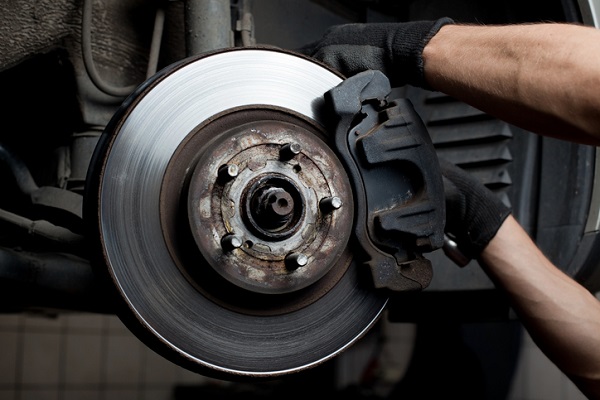
Despite the significant size difference, a bicycle and an automobile share some of the same engineering blueprint. The brakes are one such similarity. It’s usually a well-hidden feature on a car or truck, but it’s easy to spot how the braking system works on a bicycle. The brake pads create friction against the wheel, forcing it to stop. The same process is followed for a vehicle, except the brake pads squeeze against the rotor instead.
Mechanics always pay close attention to brake pad wear because the consequences of ignoring problems with this component can be lethal. Thankfully it’s a relatively easy fix, so let’s take a closer look at the issue:
Eyes and Ears Can Be Used to Spot Brake Pad Wear
Most brake pads these days are metallic or semi-metallic, which is usually a mixture of iron, copper, steel, and graphite bonded together. These pads wear as time goes by, and the most obvious visual result of this is the brake dust left behind on the wheel surface. New pads are usually around 12 millimeters thick. Accurately checking their thickness on a regular basis usually means removing the wheels. Wear may not be consistent across all of the vehicle’s wheels so it’s important to check each of them during careers in the auto industry.

Learning About the Dangers of Brake Pad Wear at Auto Technology School
Fully worn brake pads mean that the metal backing is in contact with the rotor while braking. This doesn’t generate enough friction to stop the car adequately, putting the driver at risk of serious injury or possibly even death.
The contact could also cause warping to the rotor, which will then need to be machined or replaced. Placing new brake pads against a warped rotor will cause further uneven brake pad wear and the problem reoccurs. This all costs a driver more and more heartache, but a graduate from a top auto technology school has the knowhow to carry out these repairs to the highest standard.
Replacing Brake Pads Is a Common Task for Auto Mechanics
If an auto mechanic spots that brake pads need to be replaced, it’s a relatively straightforward task. The vehicle should firstly be lifted off the ground, before the wheel is fully removed. The brake caliper is then taken off, but those in auto mechanic training should be careful as the caliper still remains connected to the brake line throughout this process.
The old brake pads can then be popped out. The back of the new pads should be greased up to avoid annoying squeaks, and then put in place. The caliper and wheel can then be re-secured to the vehicle. A brake pad check-up should take place around twice per year. It’s a stress-free process which makes sure a vehicle continues to run safely and smoothly.
Find out more about some of the best trades training BC has to offer.
Automotive Training Centres can get your auto mechanic career off to a great start.

